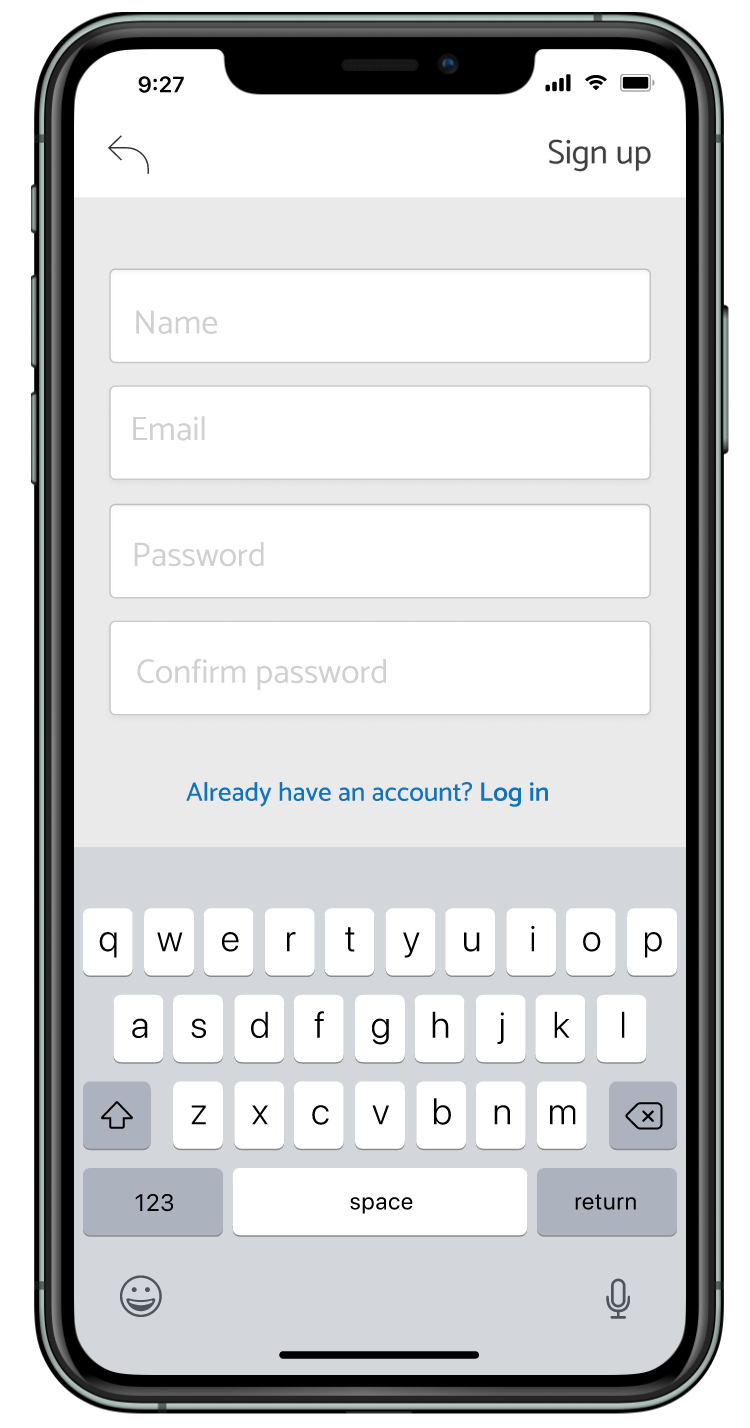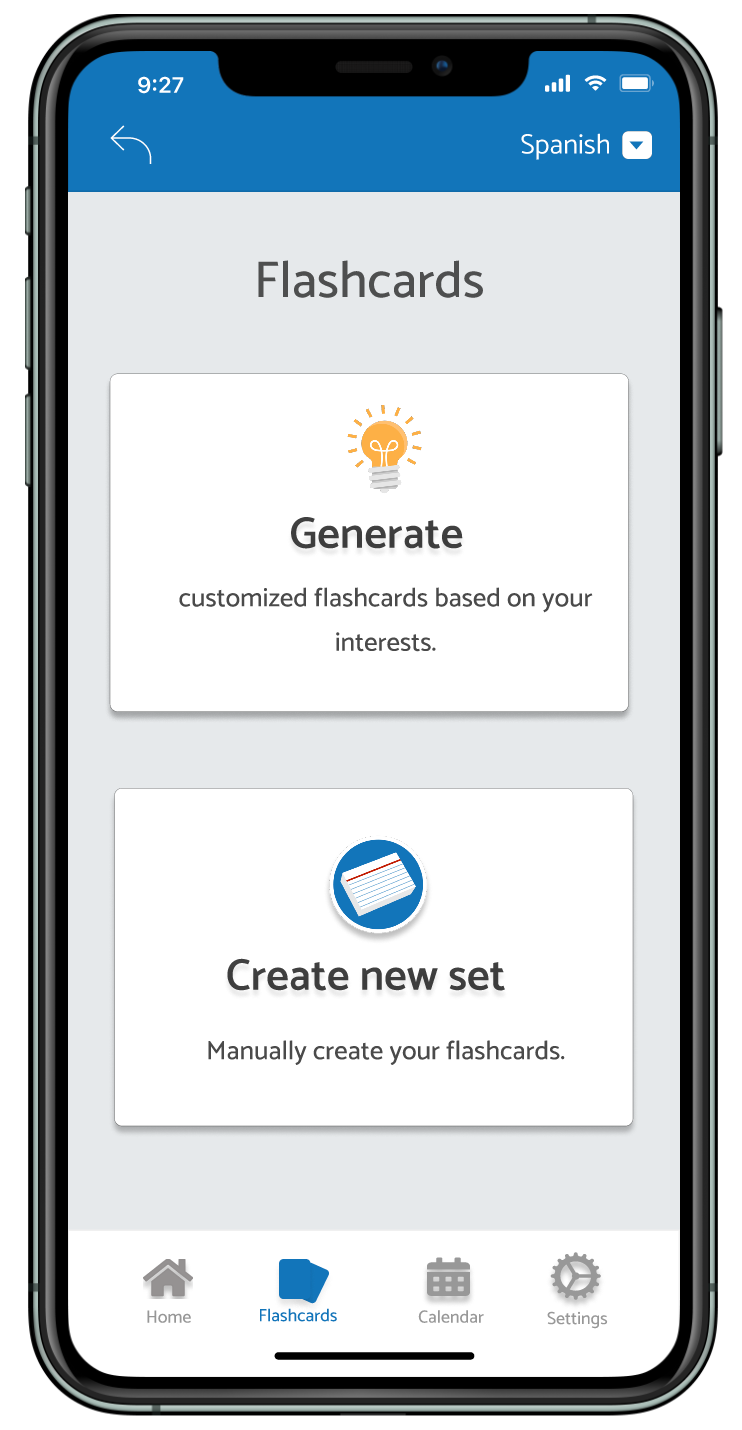WORLDLANG
A native language learning application
Overview
I was given a task to create an app that would allow users to learn new vocabulary words. I went a step further and designed it to have different language options so that my app could reach a broader range of users
When was this?
Jul 5-Jul15 2021
My Role
User Interviews, Competitive Analysis, Information Architecture, Interaction Design, Usability Testing, Visual design, Prototyping.
The Challenge
Learning a new language can be extremely beneficial for the advancement of one’s career. Bilingualism offers a competitive advantage that sets candidates apart from their monolingual peers in the job search process, as the demand for bilingual professionals is rising at an exponential rate. Speaking another language can also open many door for young adults such as the opportunity to study abroad at the university of their dream. However, learning a new language can be extremely challenging, for it requires sustained consistent practice. Although there are many language apps in the market, a lot of them are not habit-forming nor engaging.
In 2010, there were 240,000 job postings aimed at bilingual workers. This number ballooned to 630,000 in 2015 (NAE, 2017).
In 2017, there were over 5.3 million international students, up from 2 million in 2000 (UNESCO, 2019).
The Design Thinking Process
Phase 1: Empathise
I spent this phase getting to know my users and the problems that they were going to be facing while trying to learn a new language. I needed to first conduct a competitive analysis to get to know the market. Next, I interviewed 3 users in order to engage with the people who would be using my product so that I could understand them on an emotional and psychological level.
Phase 2: Define
I proceeded by taking all the insights I gathered during the empathise phase to define the needs and problems of users. I synthesized all the data and formulated a problem statement and a user persona.
Phase 3: Ideate
I began generating ideas for innovative solutions to my users’ problems. I had to ask myself how I could solve my users’ problems using the data I had gathered from the previous phases. I used my iPad to quickly create sketches that were going to be tested with users using the rapid prototyping method.
Phase 4: Prototype
Using Marvel, I turned my sketches into a prototype so that my users could interact with my designs. I focused on prototyping the two important user tasks highlighted in my persona’s user flows.
Phase 4: Test
During this phase, I invited users to test out and respond to my prototype. Their responses informed whether I could move forward with an idea or iterate over my prototype.
I. EMPATHIZING
User Research
After conducting a competitive analysis with three popular language and vocabulary learning apps, I recruited 3 participants to conduct user interviews for the app I was going to be creating. My user interview goals were:
To understand the behaviors and daily patterns of my users
To determine their biggest challenges when trying to learn a new language
To figure out what has helped them successfully learn new vocabulary in in the past
II. DEFINING
User Research Analysis
Insight 1: Users need an app that is interactive and enjoyable to use.
Insight 2: Users want the app to prevent them from getting distracted while learning
Insight 3: Designing an accessible app will ensure that all users have an easy time learning
User Persona
Using my insights from my entire group of users, I created a persona that would allow me to keep the pain points of my users in mind during the ideation phase.
User Flows
In order to solve Stephanie’s pain points, I identified the main tasks she would need to accomplish her goals. The user flows created were a visualization of how I expected Stephanie to navigate through WorldLang. I created two user flows. The first user flow demonstrated how she would be able to learn words from a newly created flashcard deck, and the second user flow showed the process she would go through in order to translate words from Korean to English and vice versa.
III. IDEATING
Low Fidelity wireframes
The first step I took during the ideate phase was sketching low-fidelity prototypes of the Stephanie’s user flows on my iPad using Adobe Fresco. Since my sketches had to be created within a short time frame, I chose to sketch digitally so that I would be able to make quick iterations without having to create new sketches.
IV. PROTOTYPING
Rapid Prototyping
I took all the photos of the wireframes I sketched and loaded them into Marvel to create a low-fidelity prototype. Rapid prototyping allowed me to swiftly develop designs for my app in order to achieve validation with my users. Using this method, I was able to quickly iterate over my prototype, gradually integrating feedback and increasing the level of fidelity until I ended up with a high-fidelity prototype.
V. TESTING
Moderated Remote Usability Test
I recruited 3 participants and conducted a moderated remote usability test with the WorldLang prototype. My usability test took about 10 minutes total per participant and included 4 test tasks. I took detailed notes during the test and summarized my findings from all of my participants in a usability test report.
Scenario Tasks
Usability Test Report
High-Fidelity Prototype
VI. REFLECTION
Developing the WorldLang app was a comprehensive endeavor that successfully brought the vision of an effective language learning tool to life. Tasked with creating an application for vocabulary learning, I expanded the scope to include multiple language options, broadening the app's accessibility and appeal to a diverse user base. By conducting in-depth user interviews, competitive analysis, and developing detailed personas, I gained valuable insights into the specific needs and challenges faced by language learners. These insights guided the creation of a responsive, intuitive interface, ensuring seamless interaction across all devices. The app was continuously refined through iterative prototyping and usability testing, resulting in significant improvements in navigation, increased user satisfaction with vocabulary learning, and effective use of translation features.
























